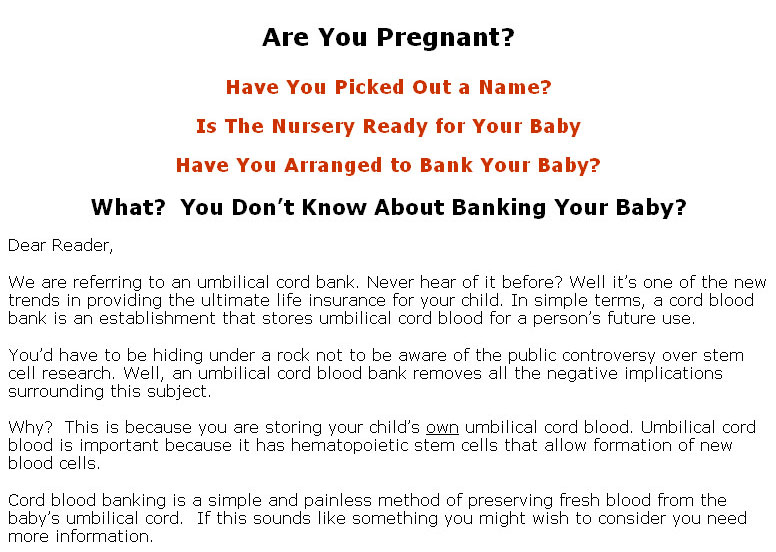Salespage Snapshot

Ebook Table Of Contents
What Is a Cord Blood Bank?
What Does Cord Blood Banking Do?
What Are the Expenses?
What is the Process
Potential Problems
Should You Consider a Private Bank?
The Decision to Do It
Advantages and Disadvantages of Transplant
Why You May Need To Consider It
When Your Child Needs Help
What Can It Fix?
What About Free Cord Blood Banking?
What Are the Ethical Considerations?
Cord Blood Banking and the Law
Stem Cell Research and Cord Blood Banking
Ebook Sample Content Preview
What Is a Cord Blood Bank?
A cord blood bank is an establishment that stores umbilical cord blood for a person’s future use. Since the early 1990s, in response to the wide potential for cord blood transplants, both public and private cord blood banks have been established. Umbilical cord blood has hematopoietic stem cell that allows formation of new blood cells. It is now effectively used to treat diseases and disorders common in vascular and immune system. However, there are some critics that do not suggest storing cord bloods to a private bank.
A public cord blood bank stores umbilical cord blood for anyone in need and is supported by the medical community. However, in order to operate, a public bank should follow very strict standards and operations.
Basically, a pregnant woman who is considering donation should contact the bank before her 34th week of pregnancy. Some organizations including the National Marrow Donor Program help individuals to identify public banks that are trusted and accredited by the government and other institutions. Once the cord blood is donated, it will be tested for diseases and genetic adaptability. All identifying information is then erased so the families will not be able to retrieve the blood once a donation occurs.
Other Details* Sales Page: Included, HTML, MS Word Doc
* File Format: MS Word Doc, PDF
* Number of Pages: 53
* Download File Size: 158 KB













